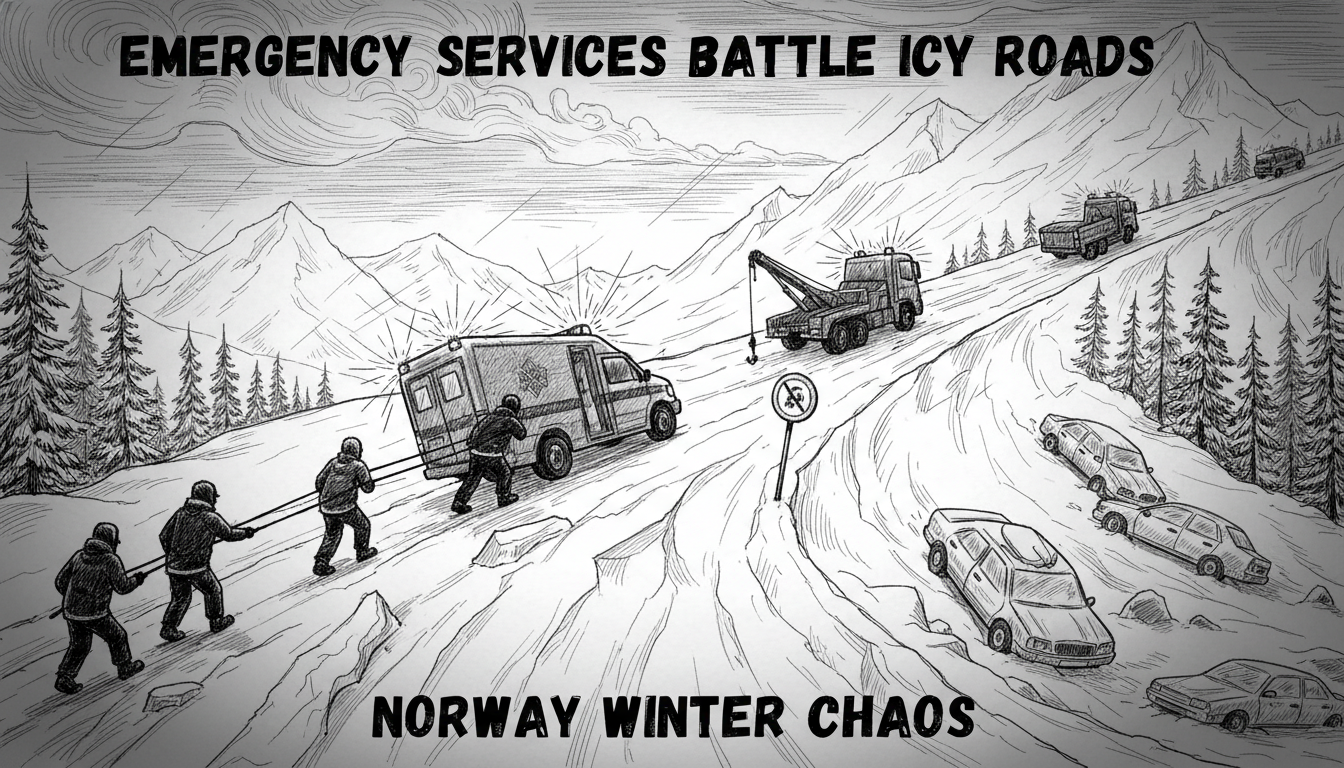Emergency response teams faced extreme challenges reaching accident scenes across Eastern Norway this morning. Hazardous driving conditions forced police and rescue personnel to abandon vehicles and proceed on foot. The rapid transition from subzero temperatures to rainfall created dangerously slick surfaces on major transport corridors.
Traffic operator Trude Lindstad confirmed multiple incidents during morning commutes. Several vehicles slid off roads in Nannestad while a multi-car collision occurred south of Kløfta junction. These incidents created substantial traffic disruptions across the region. The Norwegian Meteorological Institute issued severe ice warnings for inner parts of Eastern Norway, Telemark, and Buskerud.
Police reports detailed the severity of conditions. Officers had to complete their final approach to one accident scene on foot due to impassable roads. Roger Aaser from police operations noted ongoing salting efforts in affected areas. Another incident involved an emergency vehicle being struck when a following car failed to stop on the slick surface.
Operations leader Martin Sæther Ottesen documented the chain-reaction collision near morning rush hour. One driver required medical evaluation at an emergency clinic. Atle Vesttorp confirmed all affected roads have since reopened after clearance operations.
The most dangerous conditions persist on secondary roads throughout Indre Østfold and Romerike. Lindstad advised motorists in inland areas to exercise extreme caution. Reduced visibility combined with black ice creates particularly hazardous situations. She emphasized slowing speeds and maintaining greater following distances.
This weather pattern reflects broader challenges in Norway's winter transportation management. The country's extensive network of fjords and mountainous terrain creates microclimates where conditions change rapidly. Such events test the response capabilities of both the Norwegian Public Roads Administration and emergency services.
International readers should understand that while Norway excels at winter road maintenance, these rapid freeze-thaw cycles present unique difficulties. The situation highlights the importance of Norway's ongoing investments in Arctic infrastructure and climate adaptation strategies. Road safety remains a priority for the Storting as they allocate resources for winter maintenance operations.
Drivers throughout Southern Norway should monitor weather advisories and consider delaying non-essential travel. The Norwegian Public Roads Administration continues salting operations while police respond to additional incidents. These conditions typically persist until temperatures stabilize or precipitation patterns change.

